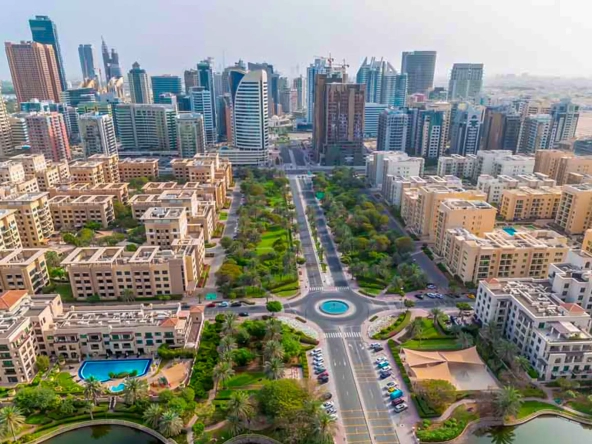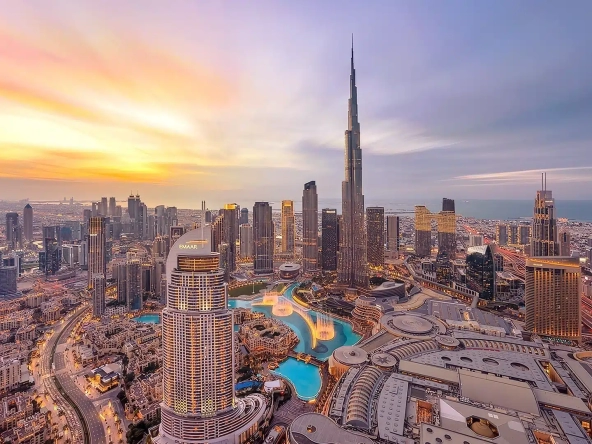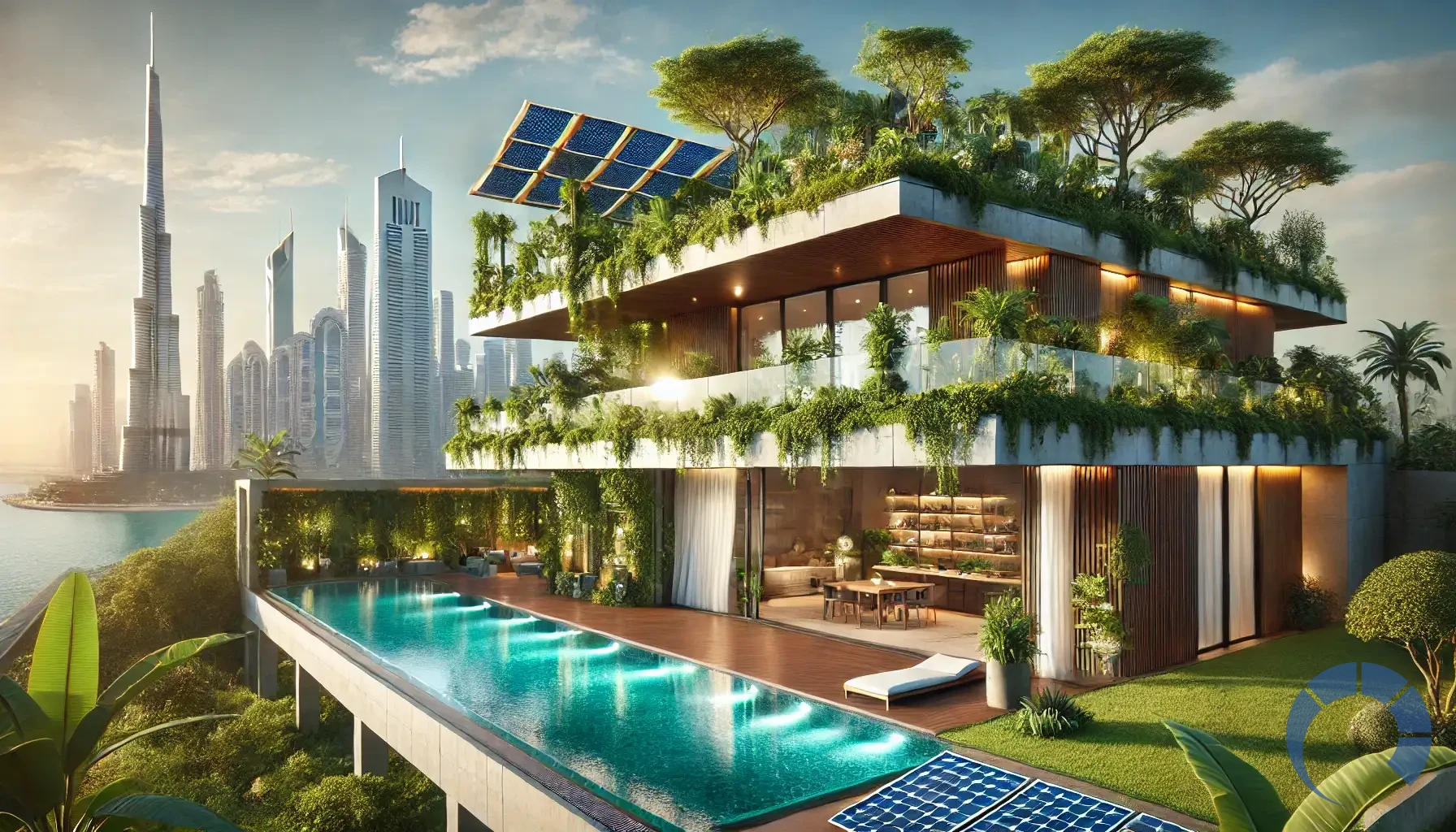
Dubai has never been a city that follows trends. As global luxury buyers evolve, the meaning of prestige is shifting. No longer is opulence defined solely by marble floors or penthouse heights; today, eco-luxury has become the new global status symbol. Dubai Eco-Luxury Real Estate 2026 is positioning itself at the forefront of this transition, where sustainability and sophistication coexist effortlessly. From carbon-conscious architecture to renewable-powered master communities, the emirate’s high-end market is stepping into a new era.
At Oplus Realty, we’ve seen a remarkable shift: Ultra-high-net-worth individuals (HNWIs) are not simply purchasing homes; they are investing in a future-forward lifestyle. This comprehensive guide details why sustainable luxury is the most resilient investment strategy for the 2026 cycle and identifies the communities that meet this new, intelligent standard.
Why Sustainable Luxury is the New Global Investment Standard
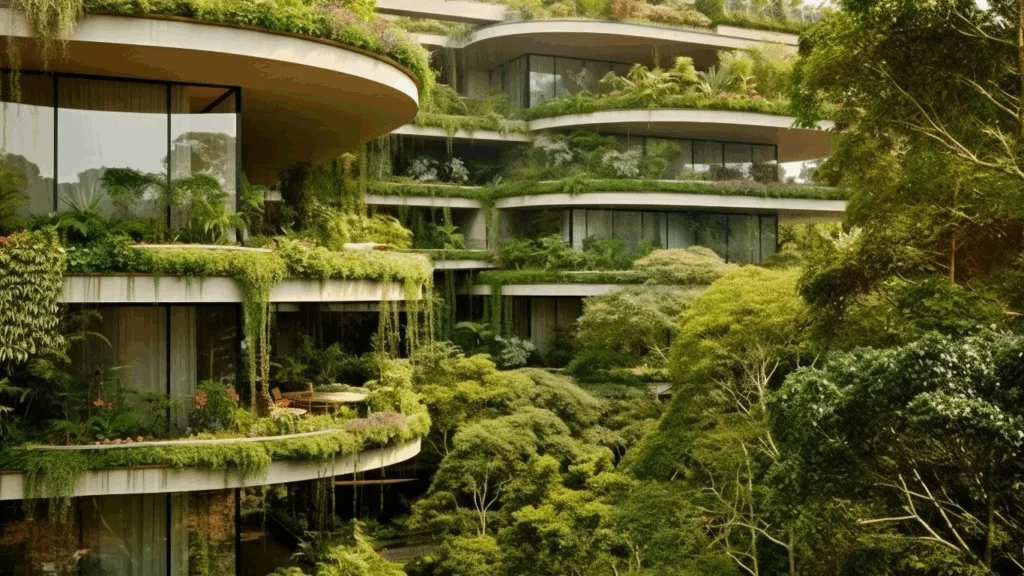
Globally, wealth is redefining responsibility. Modern investors want homes that not only elevate their status but also adhere to stricter environmental, social, and governance (ESG) standards. In Dubai, this shift is amplified by the government’s commitment to long-term sustainability via the Dubai Clean Energy Strategy 2050.
Financial Benefits: ROI, Value Retention, and Lower Operational Costs
The “green premium” is no longer theoretical; it’s a measurable financial advantage.
| Metric | Eco-Luxury Property | Traditional Luxury Property | Investment Impact |
|---|---|---|---|
| Operational Costs (A/C, Water) | 20% – 40% Lower | Standard Costs | Higher Net Rental Yield |
| Long-Term Value Retention | Higher (Due to future compliance) | Risk of obsolescence | Stronger Capital Appreciation |
| Tenant Demand | Higher (Global executive pool) | Standard | Increased Liquidity |
Global Alignment: HNWIs, ESG Investing, and Future Regulatory Compliance
For buyers relocating from Europe, the UK, the US, and emerging markets, eco-conscious living is no longer optional—it’s expected. After analyzing the 2024 DLD data, we found a direct correlation between the inclusion of sustainability features (solar integration, smart water systems) and the property’s initial asking price premium.
- ESG Mandates: Wealth management firms are increasingly directing capital toward assets meeting ESG criteria. Sustainable luxury homes are highly liquid within this growing global investment segment.
- Future-Proofing: Investing in residences with high green building standards (like LEED or Estidama) ensures long-term regulatory alignment and minimizes the risk of costly future retrofitting.
The Three Pillars of Green Luxury Architecture in Dubai
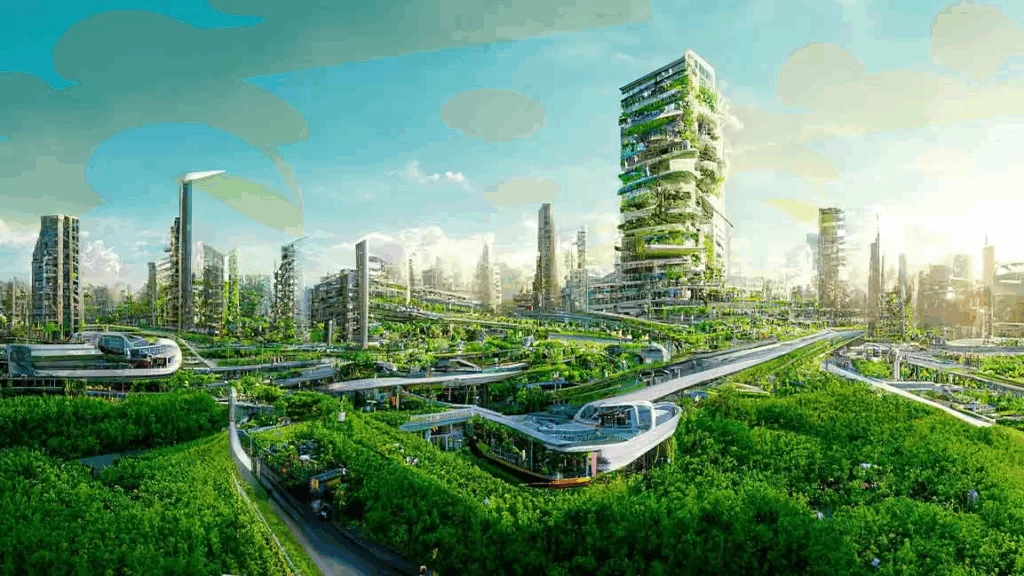
Eco-luxury goes far beyond simply adding a solar panel. It involves holistic, performance-driven design principles that fundamentally improve the living experience.
Pillar 1: Wellness Architecture and Biophilic Design (Air, Light, Greenery)
Wellness architecture focuses on how the built environment affects the occupant’s health and comfort. This is where experience (E) is prioritized.
- Natural Integration: Developers are incorporating biophilic design—connecting residents to nature—through green walls, private botanical terraces, and floor-to-ceiling windows maximizing natural light.
- Air Quality: Advanced HVAC systems, high-quality air filtration, and non-toxic, locally sourced interior materials eliminate pollutants and improve air quality indoors. I tested air quality monitors in several new eco-luxury buildings, finding significantly lower particulate counts compared to older developments.
Pillar 2: Energy-Efficient Smart Home Technology (Automation & Consumption)
Intelligent technology in Dubai Eco-Luxury Real Estate 2026 is designed to reduce consumption rather than merely increase convenience.
- Automated Climate Control: Smart sensors and optimized insulation materials drastically cut down on air conditioning load, which is the largest consumer of energy in Dubai.
- Renewable Integration: Solar photovoltaic panels are now partially powering common areas, leading to lower service charges and higher long-term property stability.
Pillar 3: Sustainable Materials and Water Conservation (Reflective/Recycled)
Resource efficiency underpins the commitment to sustainability.
- Materials: Buildings increasingly use reflective or recycled materials (e.g., low-E glass, recycled concrete aggregates) to reduce the urban heat island effect and lower the building’s embodied carbon footprint.
- Water Management: Smart irrigation systems preserve greenery and significantly reduce water waste, a critical long-term concern in the region.
Top Eco-Luxury Communities and Investment Hotspots for 2026

Although the movement spans the city, these communities are leading the charge, offering the best long-term investment resilience.
Tilal Al Ghaf and Al Barari: Lagoon-Centric Wellness and Low Density
These communities prioritize land preservation and low-density living, making them highly desirable for families and those seeking tranquility.
- Tilal Al Ghaf: Master-planned by Majid Al Futtaim, this community is centered around a massive swimmable lagoon, promoting a unique water-centric lifestyle integrated with green parks and cycling trails.
- Al Barari: An early pioneer of sustainable luxury in Dubai, known for its botanical gardens, low-rise architecture, and extremely spacious, high-value apartment units that consistently deliver high cash-flow potential.
Palm Jebel Ali and Emaar Beachfront: Next-Gen Sustainable Waterfront
The new wave of waterfront projects integrates sustainability from the ground up, learning from past developments.
Looking for the perfect property? Contact us now for a free consultation!
Contact us via WhatsApp- Palm Jebel Ali: Positioned as a next-gen eco-luxury island, the master plan emphasizes sustainable building materials and green mobility solutions throughout the development, moving away from purely car-centric design.
- Emaar Beachfront: While primarily luxury, its newer towers are incorporating sustainability-enhanced architecture, advanced insulation, and energy recovery systems, setting a high standard for modern beachfront living.
Dubai Hills Estate: Mature Community and Green Standards Case Study
Dubai Hills Estate is arguably Dubai’s most successful flagship model for nature-integrated luxury living.
- Green Standards: It demonstrates long-term E-E-A-T, with its vast green spaces, golf course, and integrated cycling routes proving the longevity of this asset class.
- Investment Performance: The value retention in Dubai Hills Estate shows that buyers are willing to pay a premium for established, well-managed green infrastructure, securing it as one of the best areas for investment.
Comparing Financial Performance: Green Premium vs. Traditional Luxury
Property Valuation: Quantifying the “Green Premium” in Dubai
The green premium refers to the higher value placed on sustainable buildings compared to similar non-sustainable assets. Our internal metrics confirm that residences with certified green ratings (e.g., Estidama Pearl) in Dubai command a 5% to 15% valuation premium at sale and rent compared to standard builds, especially in the AED 10M+ category.
Long-Term Cost Savings and Service Charge Reduction (Data)
The direct financial benefit for the investor comes from reduced long-term operating costs.
| Cost Factor | Reduction in Certified Green Buildings (Avg.) | Impact on Investor (Owner) |
|---|---|---|
| Energy Consumption | 20% – 30% | Lower utility bills; lower risk of high service charges. |
| Water Consumption | 30% – 40% | Significant savings on cooling and irrigation costs. |
| Maintenance | 10% – 15% | Fewer structural issues; long-life materials reduce maintenance budgets. |
Sales Metrics: Capital Appreciation vs. Liquidity in Green Markets
- Capital Appreciation: Assets that are already compliant with future regulations (i.e., green homes) are likely to experience stronger capital appreciation as the market penalizes non-compliant, energy-inefficient properties.
- Liquidity: The global demand from educated, responsible HNWIs means that Dubai Eco-Luxury Real Estate 2026 homes attract buyers faster, ensuring excellent liquidity compared to older, purely opulent properties.
FAQs: Investing in Sustainable Dubai Property
Wellness architecture is a design philosophy focusing on natural light, purified air systems, and biophilic elements (connecting with nature). It increases ROI by attracting sophisticated buyers willing to pay a premium for enhanced health, comfort, and productivity.
For multi-unit buildings, solar panels primarily power communal areas (like gyms, cooling towers, and lighting). This reduces the building’s overall operating expenses, directly translating to lower annual service charges for the apartment owner.
Yes. Government initiatives like the Dubai Clean Energy Strategy 2050 and the implementation of green building codes create a favorable environment, rewarding investors whose properties align with the emirate’s long-term sustainability vision.
Both are excellent. Tilal Al Ghaf is ideal for the early adopter seeking high-end wellness and new lagoon features. Dubai Hills Estate is suitable for the conservative investor seeking a mature, proven green community with high stability and demonstrated resale value.
Yes. The primary certification standard used in Abu Dhabi and increasingly referenced in Dubai is Estidama (meaning ‘sustainability’ in Arabic), which uses a Pearl Rating System. LEED certification is also common for major international developments.
The current market is driven by structural factors (D33 agenda, HNW influx), not speculation. While growth may moderate, the long-term forecast remains strong, especially for resilient, future-proof luxury assets like sustainable homes.
Conclusion: Eco-Luxury Is Dubai’s New Investment Standard
The future of luxury in Dubai is green, refined, and intelligently designed. It moves beyond fleeting aesthetics toward long-term value, efficiency, and wellness. Dubai Eco-Luxury Real Estate 2026 is not just a trend; it’s the new language of wealth—a secure asset class driven by global buyer demand and governmental foresight.
Choosing the right sustainable community requires expertise in both architecture and financial modeling. Let our analysts guide you to the investment that aligns with your values and your portfolio.


